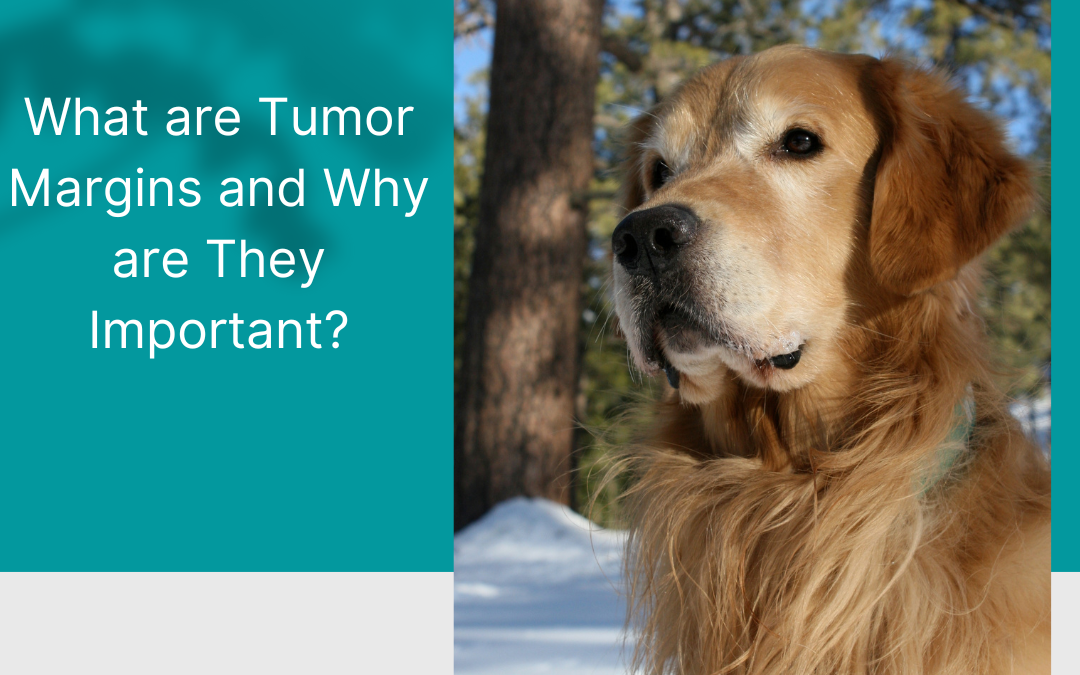If only our furry friends could talk, as pet parents we could rest a little easier knowing exactly how they feel and what’s working for them and what’s not. The reality is that we are charged with the responsibility to advocate on their behalf, particularly when they are faced with a dreaded cancer diagnosis. That is why it is so important to know what good tumor margins in dogs are and how they affect your dogs’ cancer care. There are so many options for treatment so the first hurdle is selecting the right one.
If surgery seems to be the best option to remove a tumor, you should be armed with the information we share in this article to give your beloved companion the best chance of a successful recovery from canine cancer.
What is a Tumor Margin?
This is the edge or border of the tissue surrounding a tumor. This margin is removed in cancer surgery along with the tumor. It is critically important to have the tumor and margin retained for analysis rather than discarded after surgery.
Pathologists typically use a special type of ink to draw a line along the outer edge of the entire tissue sample, then they slice it into thin sections, and examine it under a microscope. If a pathologist examines the margin and describes it as negative, clear, or clean, it means no cancer cells were found at the edge of the tissue, suggesting that all of the cancer has been removed. In some cases, the pathology report will also tell you how wide the clear margin is — the distance between the outer edge of the surrounding tissue that was removed and the edge of the cancer.
If, however, cancer cells are found to extend to the edge of the tissue, the margin is described as positive or involved, suggesting that all of the cancer has not been removed and further surgery or another form of treatment is required.
In fact, if cancer cells are found anywhere between the tumor and the outer edge of the margin, additional surgery may be recommended. If a pathologist describes the findings as “close” this means that the results lie somewhere between clear or negative and positive. Essentially, this means that the cancer cells are close to the edge of the tissue but not right at the edge and more surgery may be needed.
What are Good Tumor Margins and How Wide Should the Margin Be?
The pathologist will need to measure the distance between the outer edge of cancer cells and the edge of the tissue that was removed, which is the margin, to establish the width of a margin. It has been said that malignant cancer will come back if you don’t have wider clean margins rather than margins that are too narrow, so after you get the pathologist’s report, it can’t hurt to get a second opinion.
Remember, your canine pal can’t ask the important questions so you’ll need to ask what the definition of “clear” will be. Unfortunately, there is no strict guideline for good tumor margins in dogs or exactly how wide the margin around a tumor should be. For some doctors, 2 millimeters (mm) or more of normal tissue is considered to be enough, while other doctors consider a 1 mm rim of healthy tissue, or maybe less, to be a healthy margin.
You should bear in mind that a determination of what constitutes a clear margin can mean the difference between a full recovery or eventual recurrence of cancer. How torturous it would be to think that all is well only to be devastated all over again. That’s why this information is so important, just as important as knowing the right questions to ask.
Having an accurate diagnosis of the type and the grade of the tumor is very important for the surgeon when planning the surgical margins. Different types of tumors behave differently, with some tend growing invasively, like a plant shooting out long roots in every direction. On the other hand, other types of tumors tend to metastasize, spreading to distant spots and organs, rather than growing invasively.
Final Thoughts on Asking Your Vet About Good Tumor Margins in Dogs
You know your pet through and through. Combine that knowledge with your love for your pooch and trust your instincts so you’ll make the right treatment decisions when your pet has been diagnosed with cancer. Do your research and ask as many questions as you need to feel comfortable that you understand the diagnosis, prognosis, and medication and treatment options thoroughly.
Most importantly, if your pet is going to have surgery, make it unmistakably clear that you want the tumor to be analyzed after the operation to ensure good tumor margins. It’s the only way to know exactly what you’re dealing with. Remember, your best pal’s life may depend on the information you’ve gleaned from this article and spread the word because we’re willing to bet the average pet owner has no idea how important it is to be educated about the implications of tumor margins.



The content of this article was very informative and helpful to me. Our Boxer, Jack, is facing a biopsy for lymphoma. Thank You.